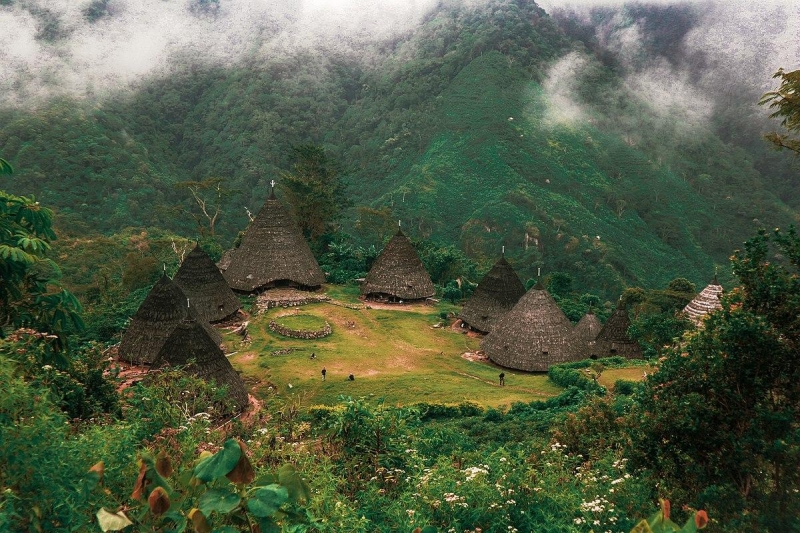Wae Rebo Village Flores, a harmonious way of life

The village completely surrounded by panoramic mountains and the dense Todo forest. This tropical forest is rich in vegetation, where you will find orchids, different types of ferns and hear the chirping of many songbirds. It can be reached around 4 hours hike from main road. The hike is definitly worth the effort, the dense rain forest along the narrow path to wae rebo is one of stunning biological diversity.
Wae Rebo’s main characteristics are their unique houses, which they call Mbaru Niang that are tall and conical in shape and are completely covered in lontar that form its rooftop down to the ground. It appears that at one time such kind of houses were quite common to the region. But today, it is only this village that continues to maintain the typical Manggarai traditional house, without which these unique houses would have been completely fazed out.
One of the main house called “Mbaru Gendang” living by eight representatives families lineage from tribal chief and other Niang house living by a representative of their ethnic families. It has 7 houses only from wood with 8 metres height and contained of 5 floors with a cone shape.
There are approximately 800 people living there, without electricity, signal, or television. The people of Wae Rebo make their houses themselves, all with very natural sources from the jungle.The house has five levels, each level designated for a specific purpose. The first level , called lutur or tent, are the living quarters of the extended family. The second level, called lobo, or attic, is set aside to store food and goods, the third level called lentar is to store seeds for the next harvest, the fourth level called lempa rae is reserved for food stocks in case of draught, and the fifth and top level, called hekang kode, which is held most sacred, is to place offerings for the ancestors.
The staple diet of villagers is cassava and maize, but around the village they plant coffee, vanilla, and cinnamon which they sell in the market, located some 15 km away from the village.
When you visit Wae Rebo, you will not only see the authentic manggaraian housing,but also get an opportunity to experience the daily life of the local people. Visitors are welcome to spend the night in the mbaru niang to socialize and dine with the Wae Rebo community. you will sleep on a tikar, a woven mat made out of pandanus leaf, in the mbaru niang, and experience their way of of life and fell how harmonious it is with the nature in the beautiful small village or Wae Rebo, Flores.
Intrested in visiting this amazing sight ? Check out what Perama Tour have to offer !
